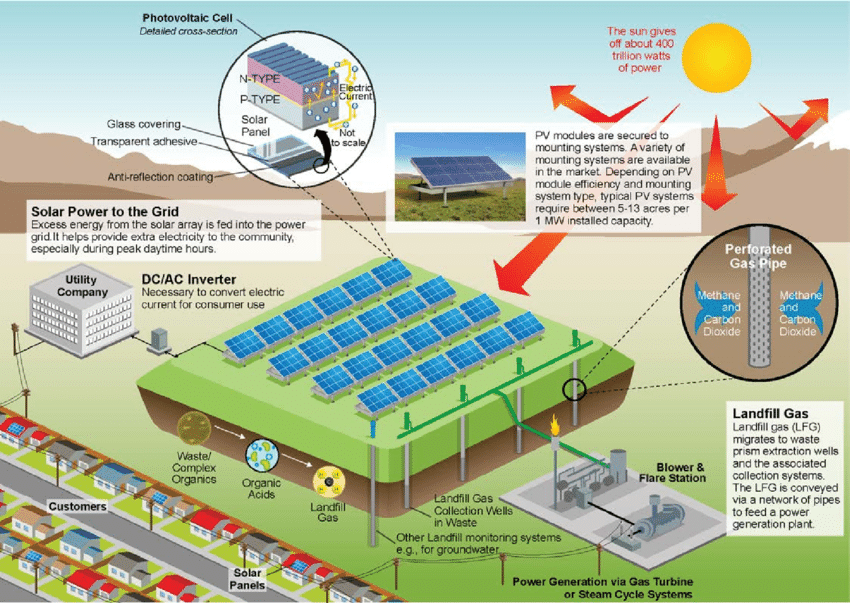In recent years, a notable trend has emerged across several states in the Northeast, where there’s been a concerted effort to promote solar development on decommissioned landfills. These sites, once deemed unusable for conventional commercial purposes due to their capped soil, are now finding new life as hosts for solar installations. This innovative approach not only addresses the pressing need for renewable energy but also revitalizes underutilized land resources. Let’s delve into the various facets of this burgeoning phenomenon.
Recognizing Untapped Potential
States have begun to realize the immense value of repurposing former landfills for solar energy generation. Annika Colston, CEO of AC Power, underscores this point, emphasizing that these sites, often considered low in value with limited prospects for alternative development, present an ideal opportunity for solar projects. With an increasing demand for greenfield space, the appeal of landfill solar becomes even more pronounced.
State Incentives Driving Progress

State Solar Incentives in USA
The momentum behind solar development on landfills owes much to state-level incentives and initiatives. States like New Jersey, New York, Maryland, Massachusetts, Virginia, and Illinois have implemented various programs aimed at encouraging and facilitating solar installations on such sites. These incentives range from financial support to streamlined regulatory processes, making landfill solar projects economically viable and logistically feasible.
New Jersey’s Pioneering Efforts
New Jersey stands out as a frontrunner in landfill solar development, with robust state incentives like the Competitive Solar Incentive Program and the Successful Solar Incentive Program. These initiatives provide crucial support in the form of solar renewable energy credits, incentivizing project owners to pursue solar installations on designated sites, including landfills. The success of these programs is evident, with numerous landfill solar projects currently underway in the state.
Maryland’s Ambitious Renewable Goals
Maryland has set ambitious targets for renewable energy generation, aiming to derive 50% of its electricity from renewable sources by 2030, with a significant emphasis on solar energy. A notable aspect of Maryland’s approach is the prioritization of solar development on brownfields, aligning environmental goals with economic revitalization efforts. Such initiatives highlight the multifaceted benefits of landfill solar projects, contributing to both energy sustainability and community development.
Community Solar: Empowering Local Engagement
Community solar programs play a pivotal role in promoting solar development on landfills and brownfields. These sites, often isolated from traditional energy offtake options, are well-suited for community solar projects. By leveraging existing grid infrastructure and engaging local communities, landfill solar initiatives foster sustainable energy practices while empowering residents to participate in the clean energy transition.
Economic and Environmental Rejuvenation

Landfills into Solar Power
The transformation of former landfills into solar power hubs offers significant economic and environmental advantages. For landowners burdened with the maintenance of capped landfills, solar development presents a lucrative opportunity to offset operational costs and generate lease revenue. Moreover, by remedying contaminated sites with solar installations, communities benefit from enhanced environmental stewardship and economic revitalization.
Navigating Regulatory Challenges
Despite the promise of landfill solar projects, developers must navigate regulatory hurdles and construction complexities inherent to contaminated sites. Environmental agencies play a crucial role in ensuring compliance with safety and environmental standards, necessitating innovative solutions like non-penetrative foundations and specialized construction techniques. Despite these challenges, the growing interest in landfill solar underscores its viability and importance in the renewable energy landscape.
Driving Toward a Sustainable Future
As interest in landfill solar projects continues to surge, stakeholders across industries are embracing the potential of these innovative ventures. Corporates, private landowners, and municipalities alike are eager to capitalize on the abundance of inactive landfills across the United States, recognizing the opportunity to contribute to the clean energy transition. With unprecedented funding available for renewable energy initiatives, the imperative to harness landfill solar potential has never been greater.
In conclusion, the convergence of state incentives, community engagement, and environmental stewardship is driving the expansion of solar installations on former landfills. By repurposing these underutilized sites, we not only unlock valuable renewable energy resources but also foster economic growth and environmental resilience. As we look ahead, landfill solar stands poised to play a pivotal role in shaping a sustainable future for generations to come.